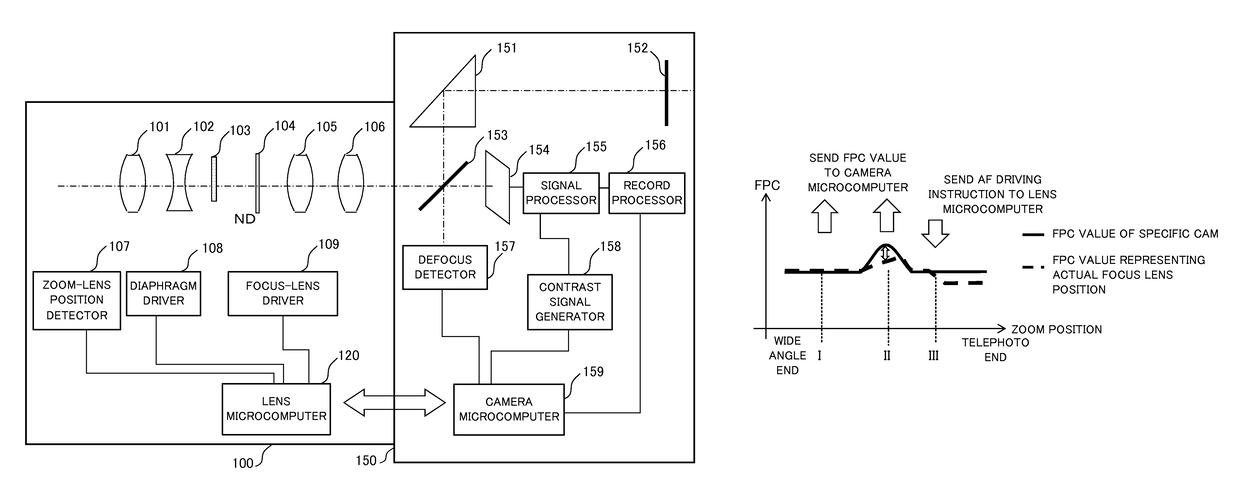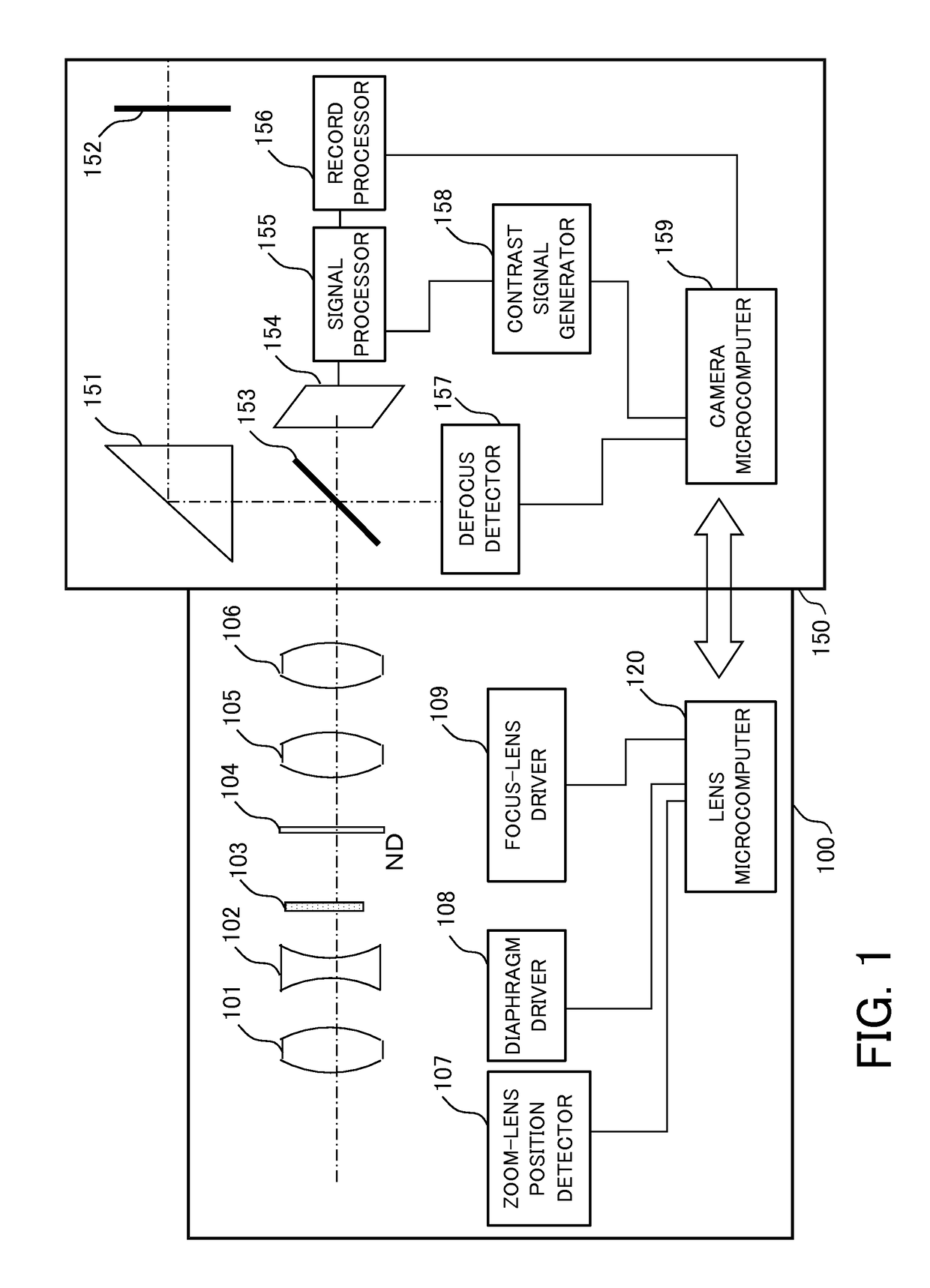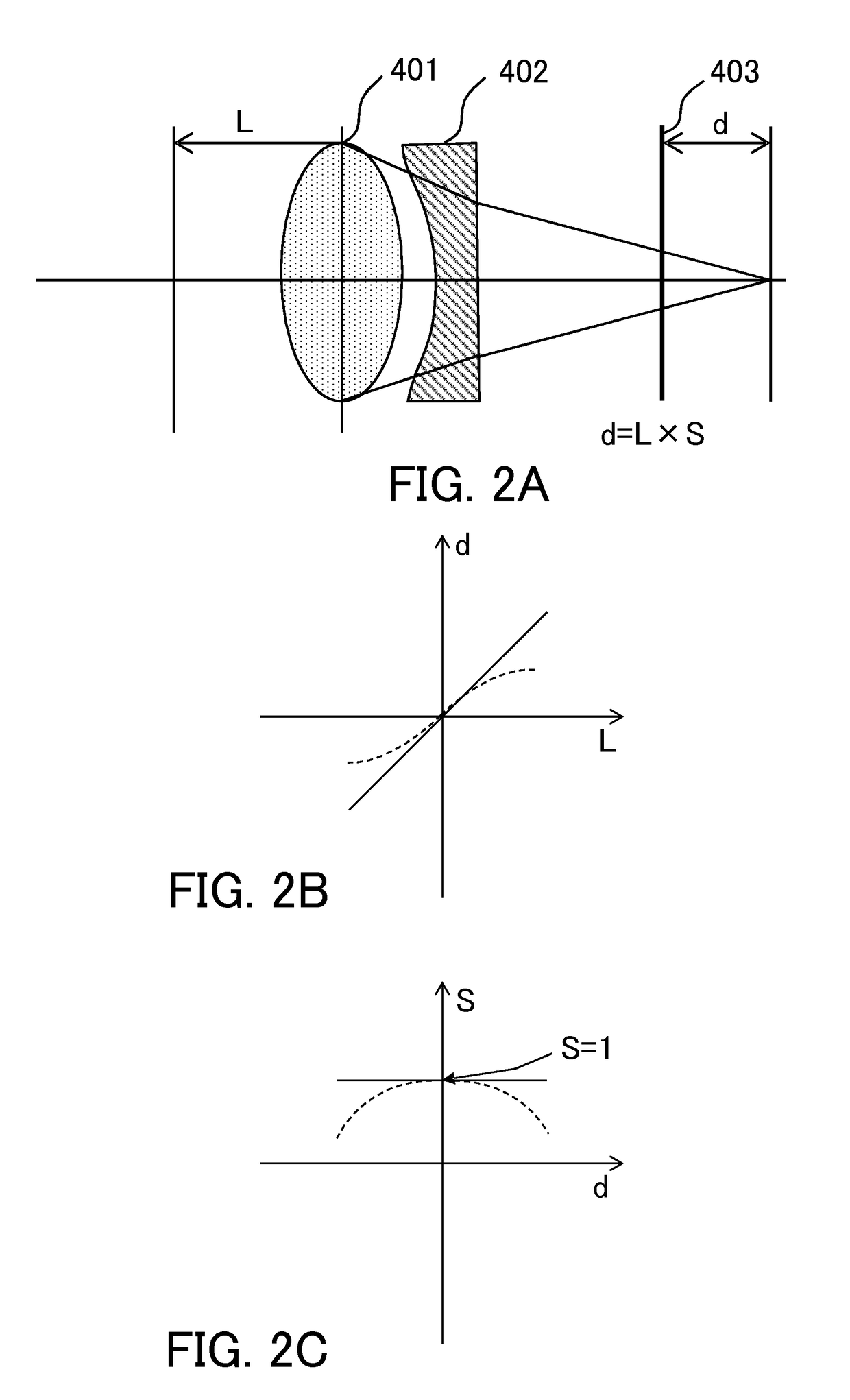Optical apparatus and drive controlling method
a technology of optical equipment and control method, applied in the direction of printers, instruments, camera focusing arrangement, etc., can solve the problems of time lag, the focus lens cannot be followed immediately by the electronic cam,
- Summary
- Abstract
- Description
- Claims
- Application Information
AI Technical Summary
Benefits of technology
Problems solved by technology
Method used
Image
Examples
first embodiment
[0057]FIG. 4A is a view illustrating a relationship between the focal length and the position of the focus lens 105 (FPC) in zooming from the wide angle end to the telephoto end when a first drive controlling method of the focus lens 105 is applied. FIG. 4B is a flowchart illustrating principal part of the first drive controlling method of the focus lens 105, and “S” denotes the step. The drive controlling method of the focus lens 105 is implemented and stored in the lens microcomputer 120 as a program that enables a computer to execute the position controlling method. This is true of other embodiment.
[0058]In FIG. 4A, the abscissa axis denotes a focal length (zoom position), and the ordinate axis denotes a position of the focus lens 105 (FPC). A solid line denotes the specific cam similar to that of FIG. 3. A broken line denotes the position (FPC value) of the focus lens 105. A dotted line denotes the position of the focus lens 105 (FPC value) which the lens microcomputer 120 sends...
second embodiment
[0062]FIG. 5A is a view illustrating a relationship between the focal length and the position of the focus lens 105 (FPC) in zooming from the wide angle end to the telephoto end when a second drive controlling method of the focus lens 105 is applied. FIG. 5B is a flowchart illustrating principal part of the second drive controlling method of the focus lens 105, and “S” denotes the step.
[0063]In FIG. 5B, the abscissa axis denotes a focal length (zoom position), and the ordinate axis denotes a position of the focus lens 105 (FPC). A solid line denotes the specific cam similar to that of FIG. 3. A broken line denotes the position of the focus lens 105.
[0064]The lens microcomputer 120 determines whether there is a transmission request for information of the position of the focus lens 105 (S20), waits for the request until it receives it, and sends information on the actual position of the focus lens 105 (S22) if there is (both at the focal lengths I and II). However, this embodiment is ...
third embodiment
[0068]FIG. 6A is a view illustrating a relationship between the focal length and the position of the focus lens 105 (FPC) in zooming from the wide angle end to the telephoto end when a third drive controlling method of the focus lens 105 is applied. FIG. 6B is a flowchart illustrating principal part of the third drive controlling method of the focus lens 105, and “S” denotes the step.
[0069]In FIG. 6B, the abscissa axis denotes a focal length (zoom position), and the ordinate axis denotes a position of the focus lens 105 (FPC). A solid line denotes the specific cam similar to that of FIG. 3. A broken line denotes the position of the focus lens 105.
[0070]The lens microcomputer 120 determines whether there is a transmission request for information of the position of the focus lens 105 (S30), waits for the request until it receives it, and sends information on the actual position of the focus lens 105 if there is (both at the focal lengths I and II) (S32). Next, the lens microcomputer 1...
PUM
 Login to View More
Login to View More Abstract
Description
Claims
Application Information
 Login to View More
Login to View More - R&D
- Intellectual Property
- Life Sciences
- Materials
- Tech Scout
- Unparalleled Data Quality
- Higher Quality Content
- 60% Fewer Hallucinations
Browse by: Latest US Patents, China's latest patents, Technical Efficacy Thesaurus, Application Domain, Technology Topic, Popular Technical Reports.
© 2025 PatSnap. All rights reserved.Legal|Privacy policy|Modern Slavery Act Transparency Statement|Sitemap|About US| Contact US: help@patsnap.com



